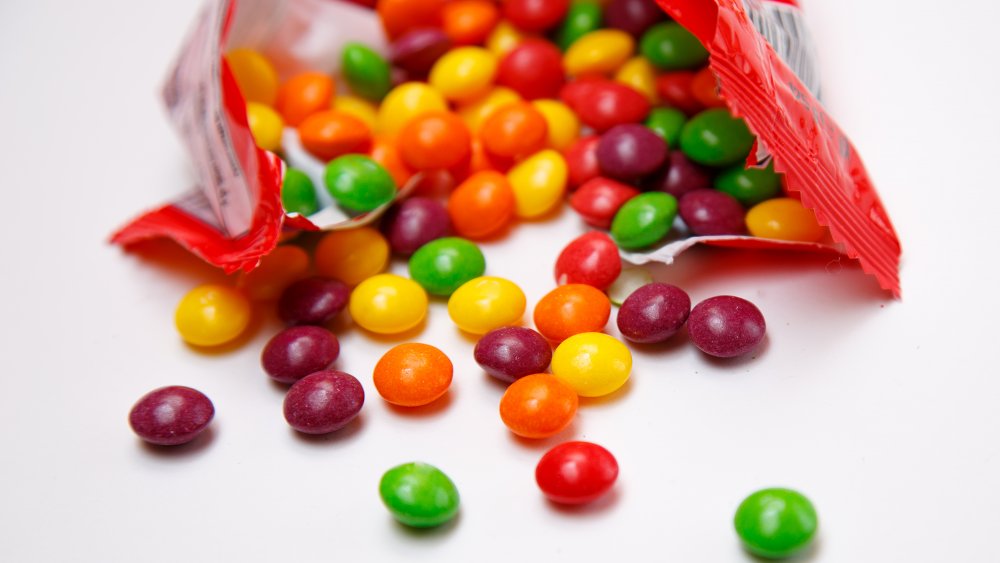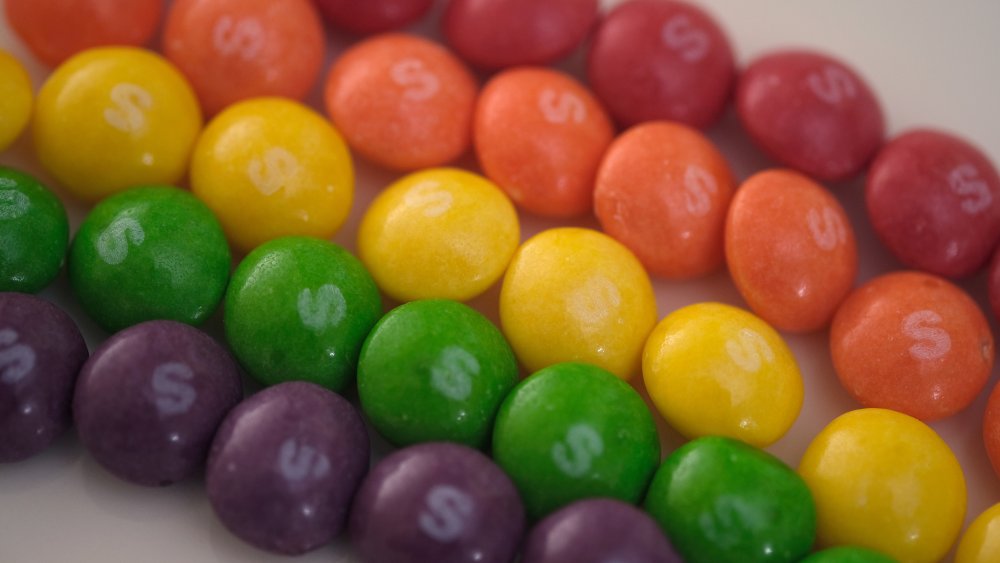Is There Really Only One Flavor Of Skittles?
Skittles are described by Snack History as small, round, fruit-flavored chewy candies emblazoned with the letter "S." The candies supposedly come in a variety of fruit flavors, inviting consumers to "Taste the rainbow." Unfortunately for anyone who insists they cannot stand the taste of yellow Skittles, we're here to tell you that your favorite Skittles flavor might be all in your head.
In an interview with NPR, Don Katz, a Brandeis University neuropsychologist, told the outlet that color and smell play as much of a factor in the way we perceive things tasting, as actual flavoring does. Katz stated that years ago the people in charge of Skittles realized it was cheaper to change the color and scent of each candy than it was to change the flavor itself. In fact, Katz claims many companies use this sensory trick to avoid creating special flavors for each product and instead, use a general fruit flavor and let our brains fill in the rest using color and smell. Skittles vehemently denies these accusations, telling Today that the candies are flavored differently according to color in the chewy interior, as well as the crunchy shell.
Two taste tests yield different results
To put this flavorless Skittle rumor to the test, the Independent did an experiment where they blindfolded and plugged the nose of an employee to see if she was able to deduce the flavor of each Skittle color by taste alone. While the taster was sure she had identified each Skittle correctly, she actually was only able to guess three out of five, confusing the red Skittle for purple. The Independent concluded that, based on their admittedly not-so-scientific study group of one, that they could tell the difference between Skittle flavors, though it was not nearly as pronounced as with access to their full senses.
Today reached out to Katz to see if he stood by his statements on Skittles uniform flavor and the neuropsychologist doubled down on his conclusion. Katz told the outlet that he also did a test with multiple blindfolded subjects wearing nose clips to prevent them from smelling the candies. In his tests, participants were only able to match the Skittles to their correct color 50 percent of the time. He explained that part of this ability to identify the Skittles flavor correctly at all can be attributed to the fact that the mouth and nose are connected, so our brain believes that we are tasting things we are actually smelling. Katz did however admit that it was possible the candies are subtly flavored differently from one another.

